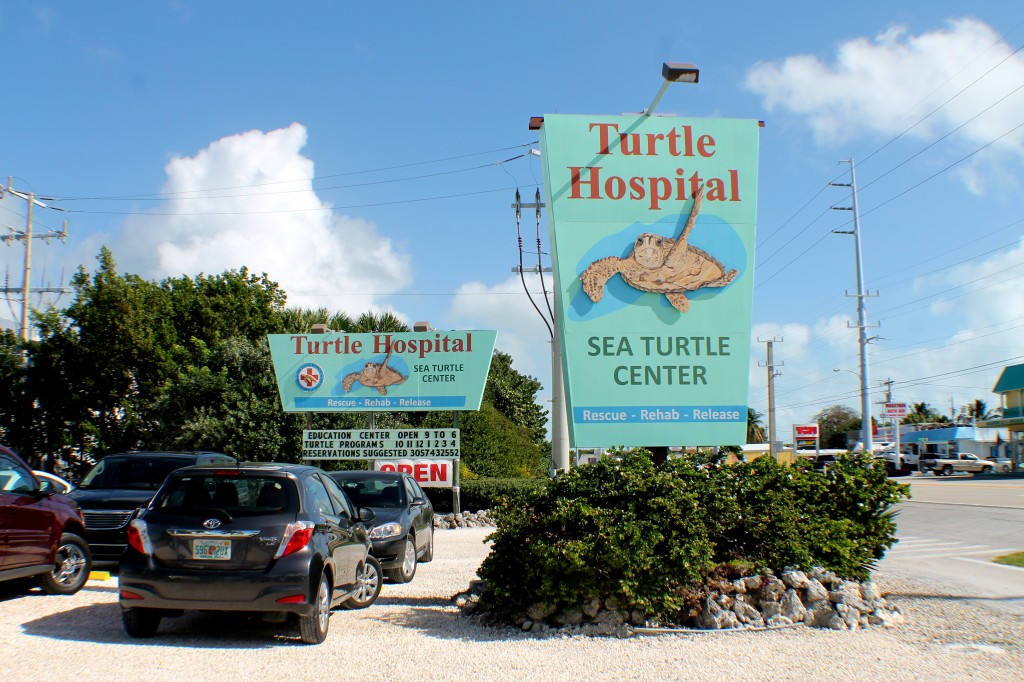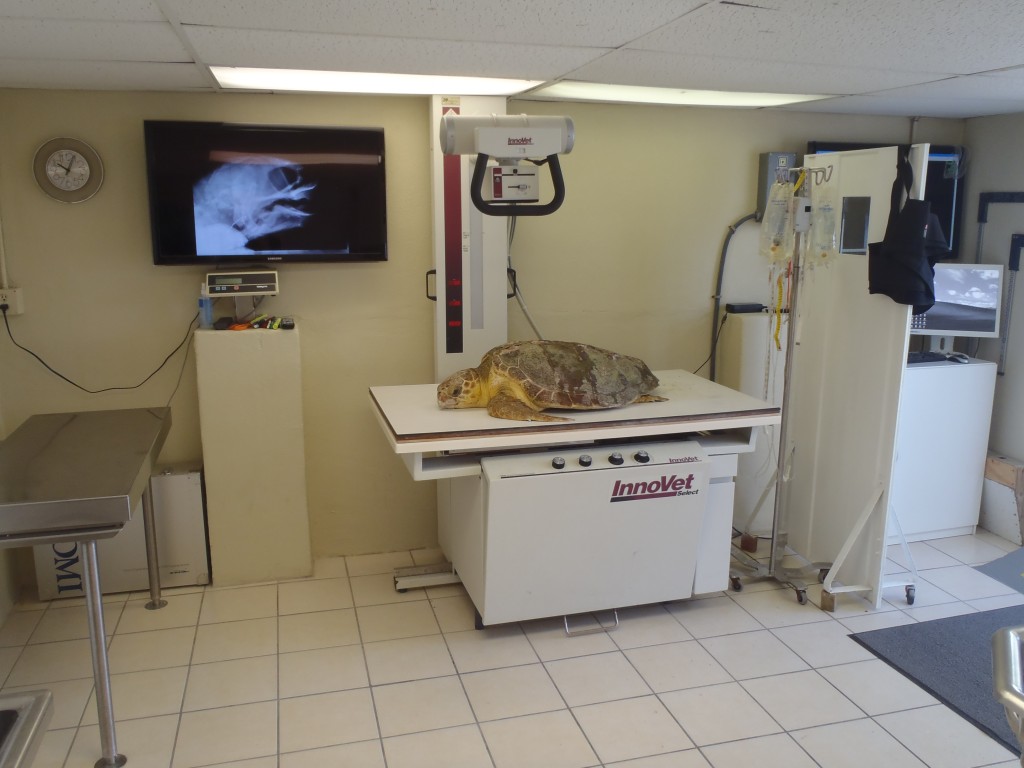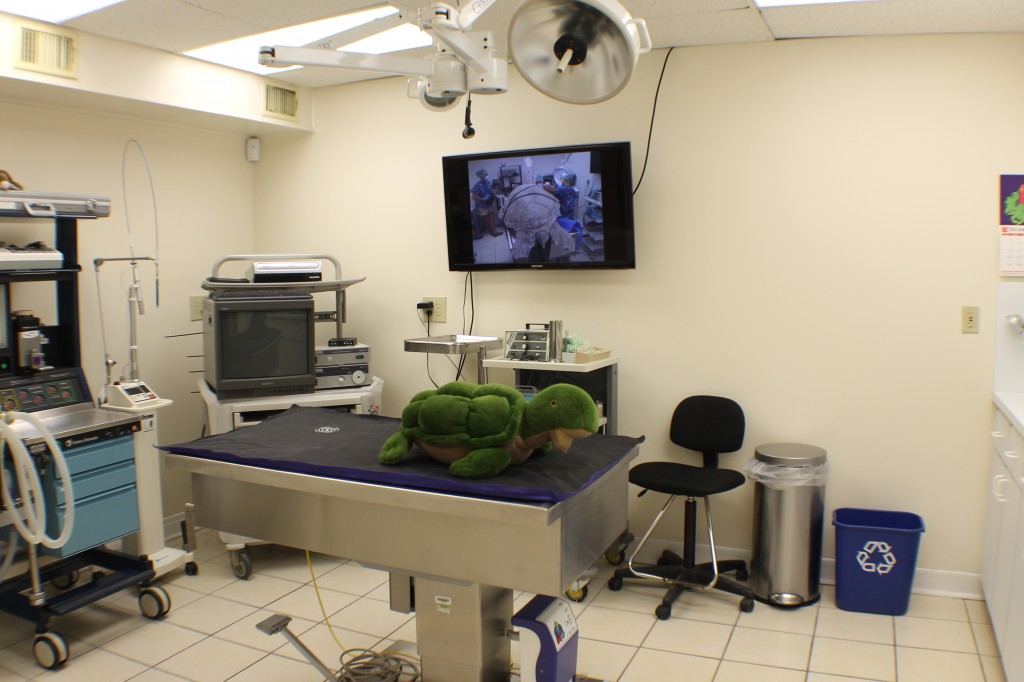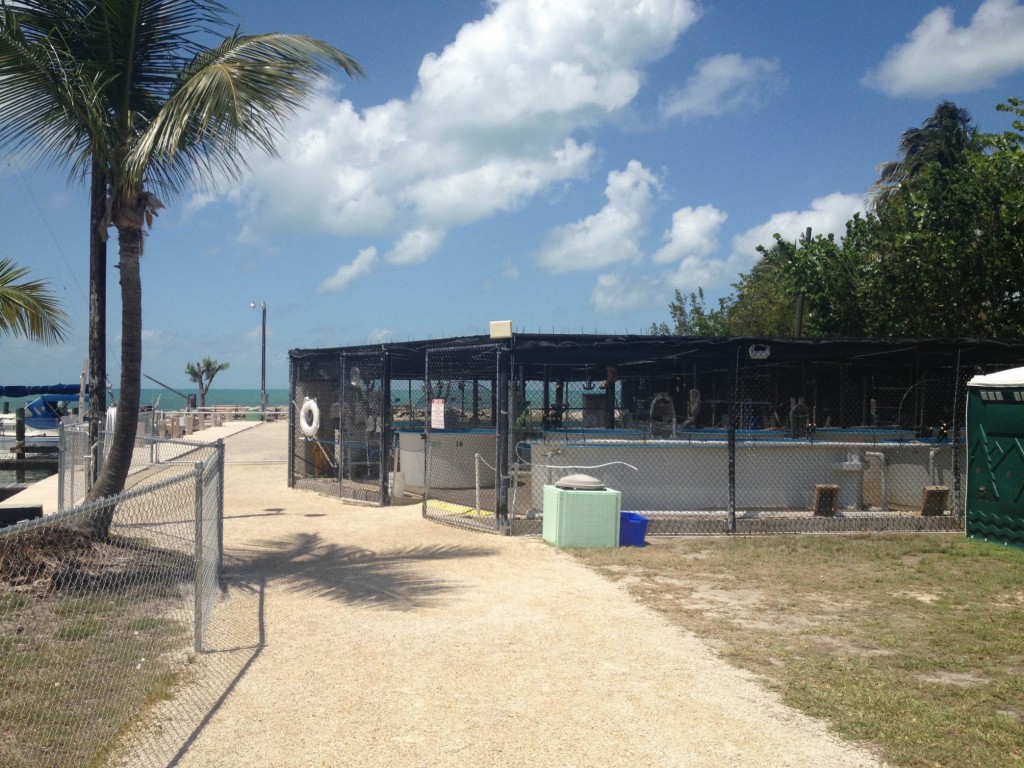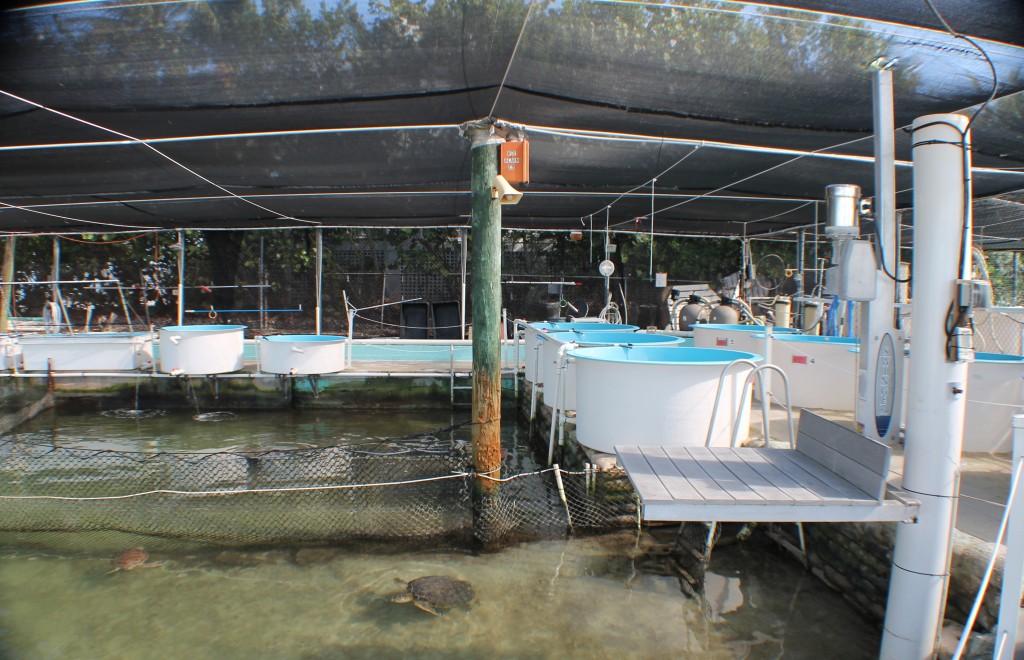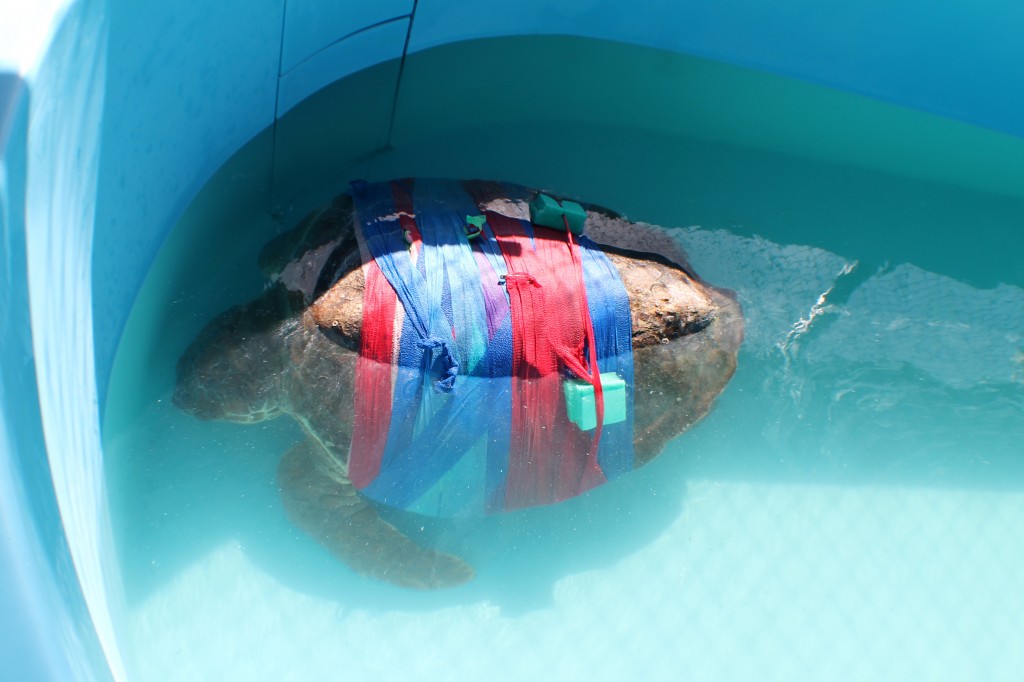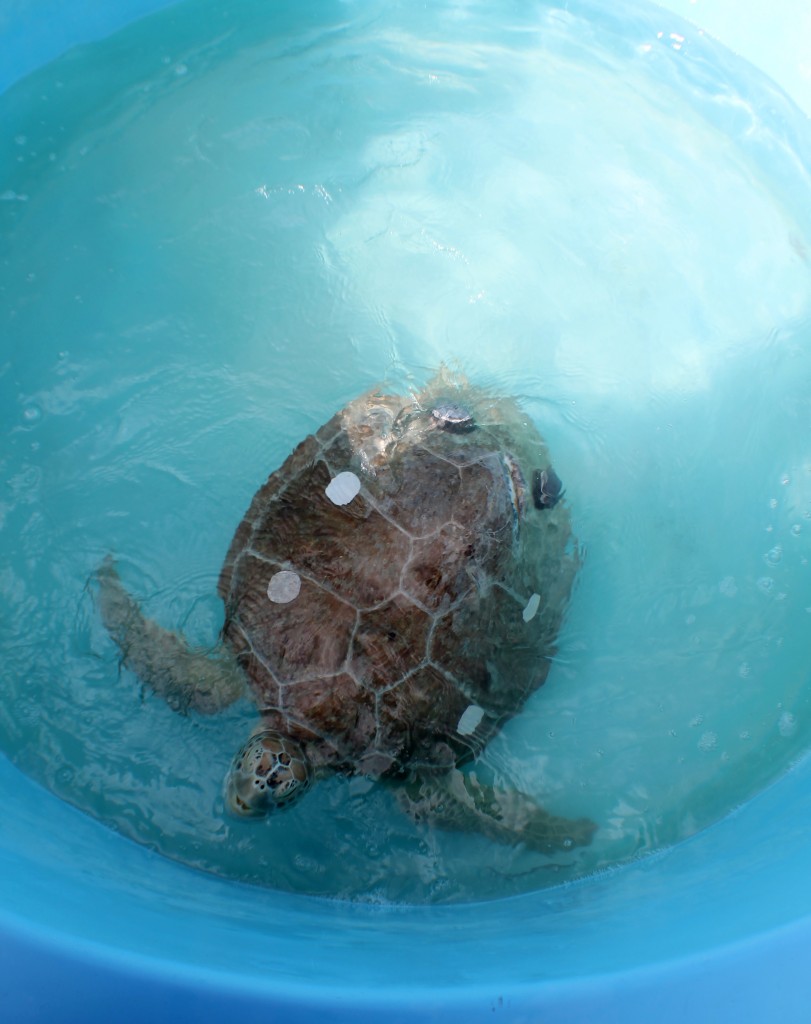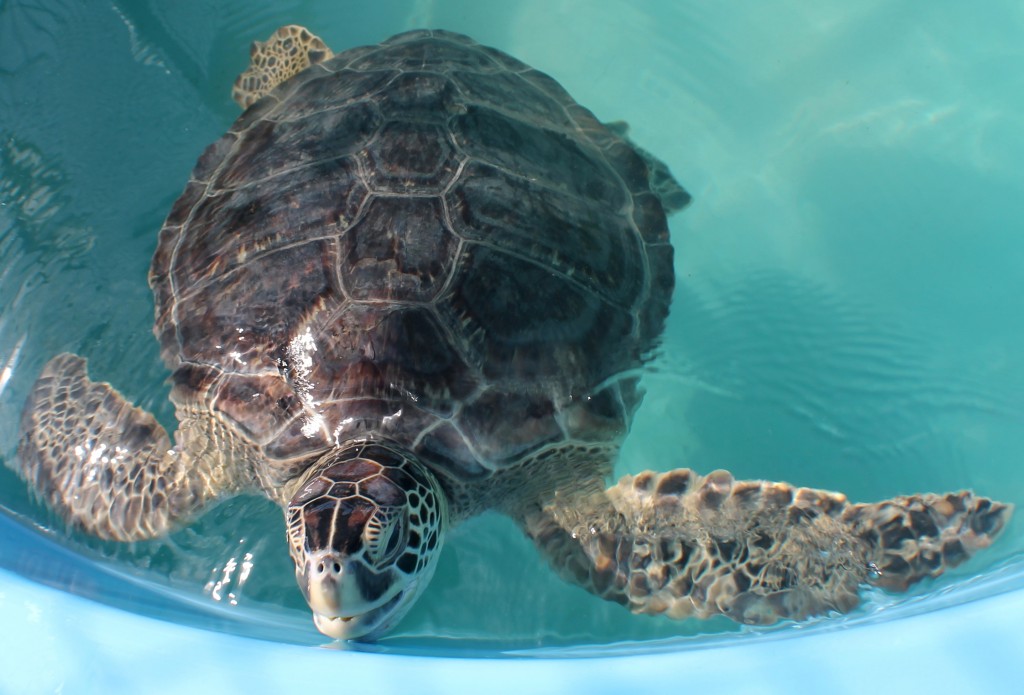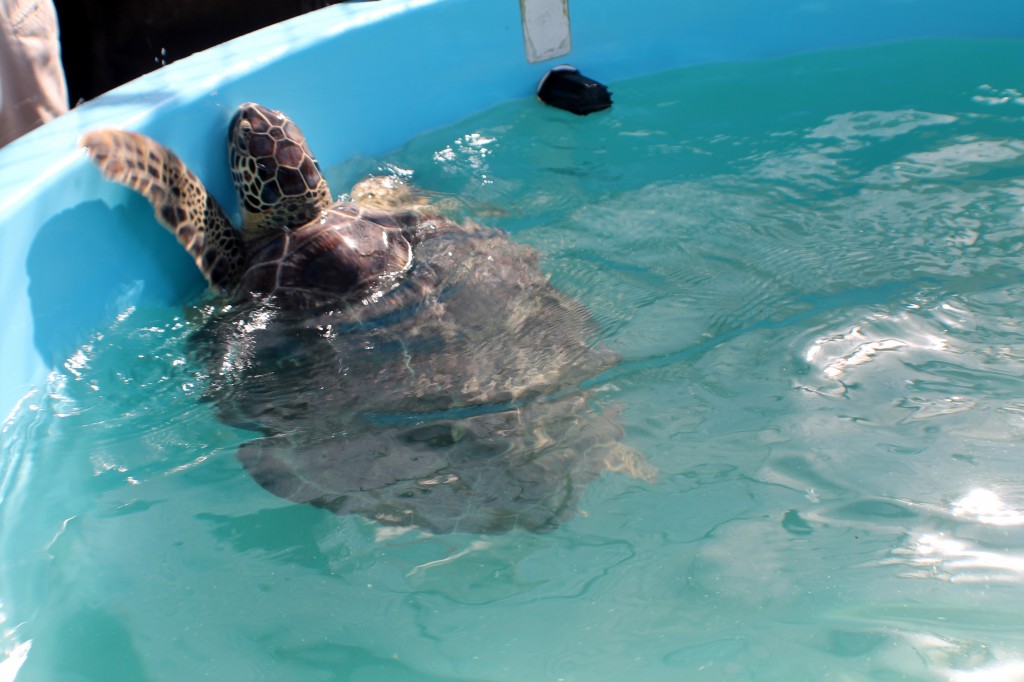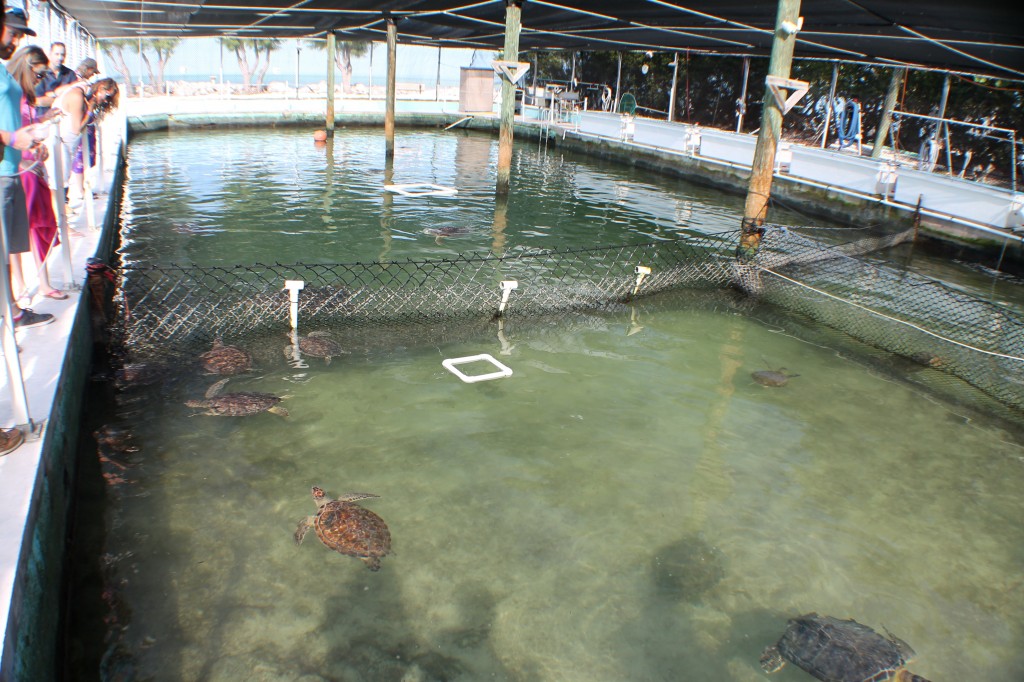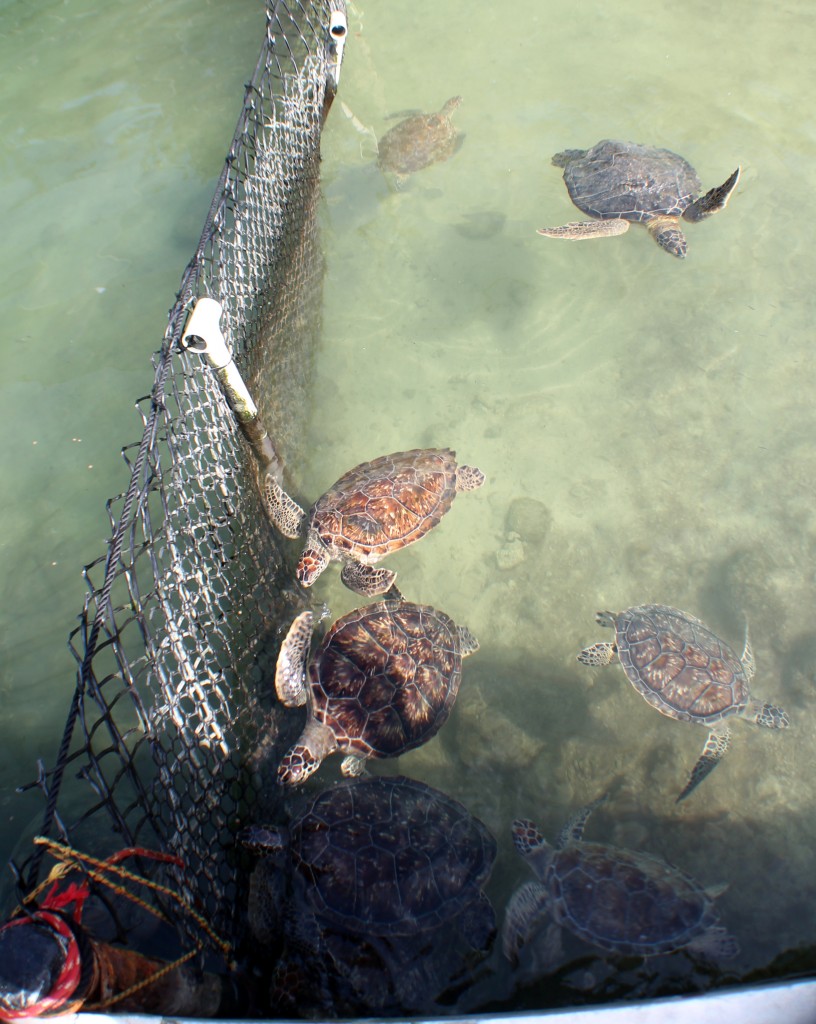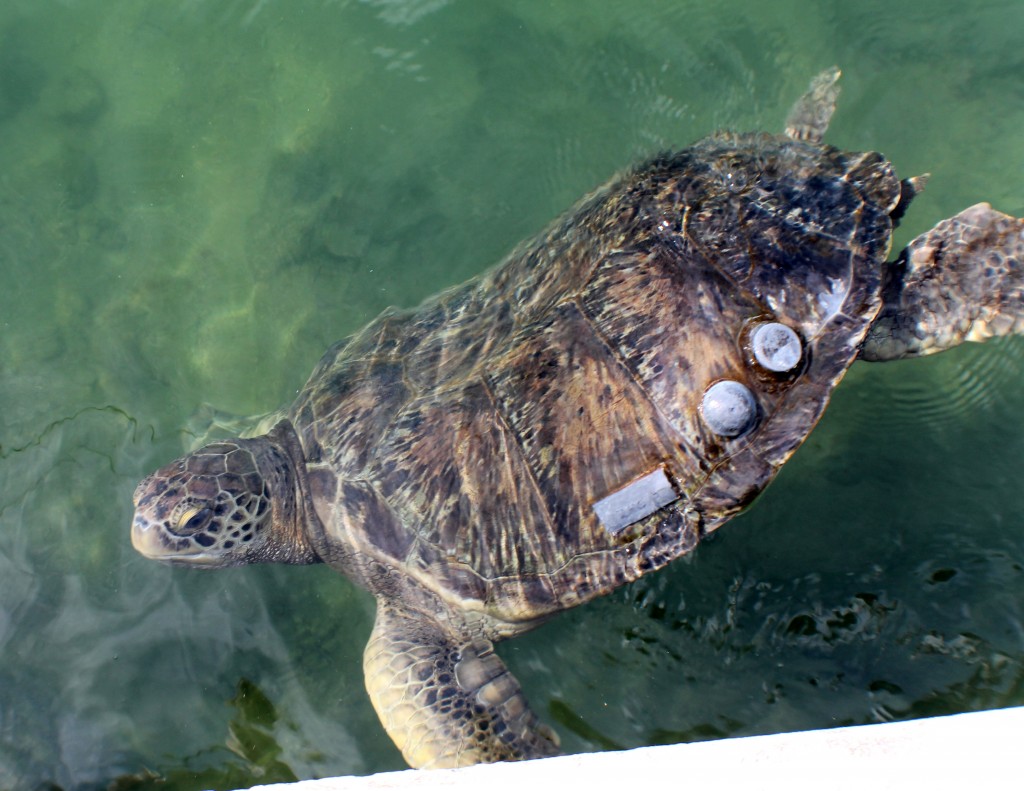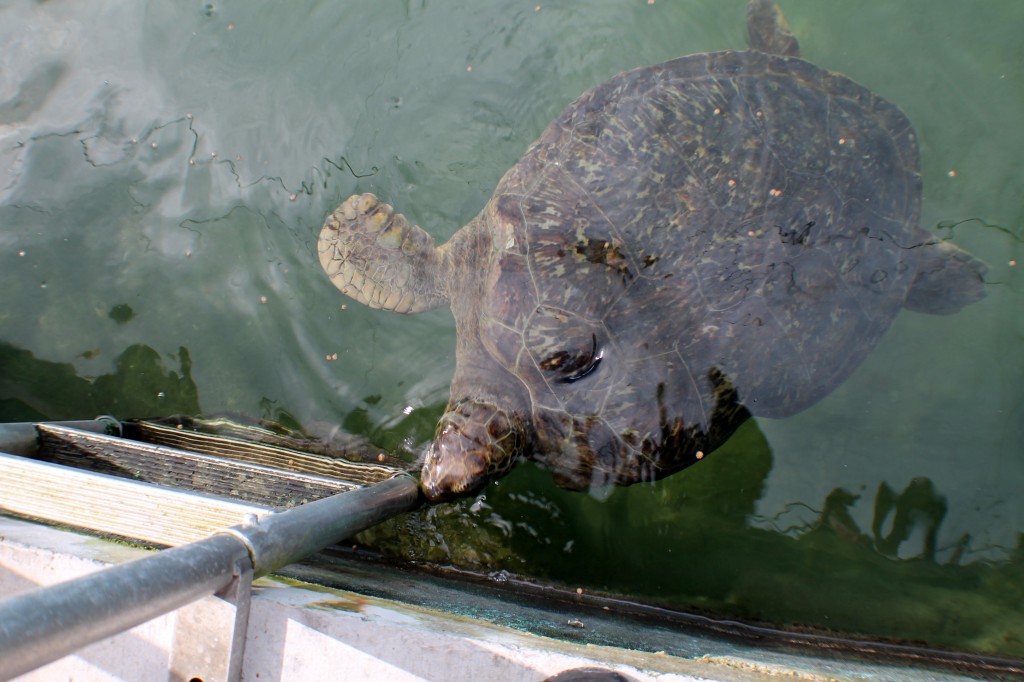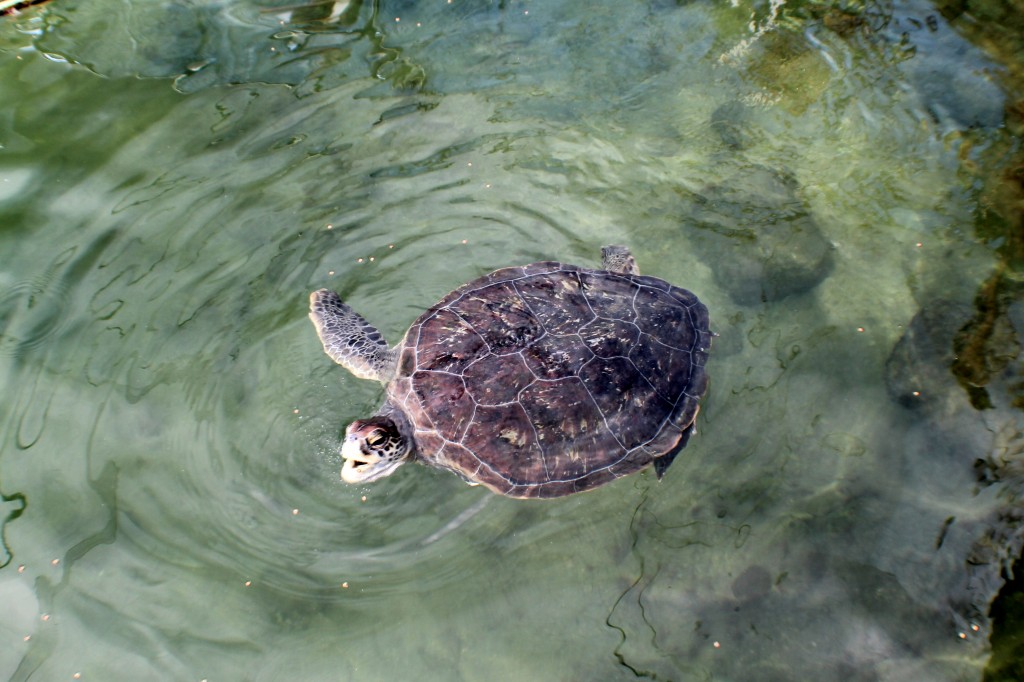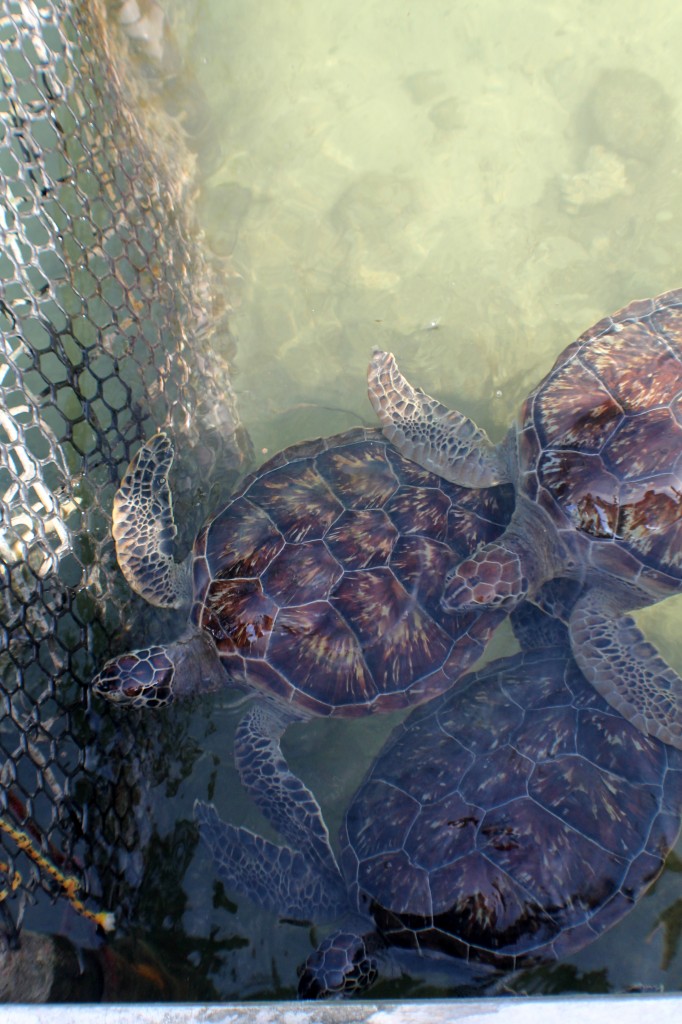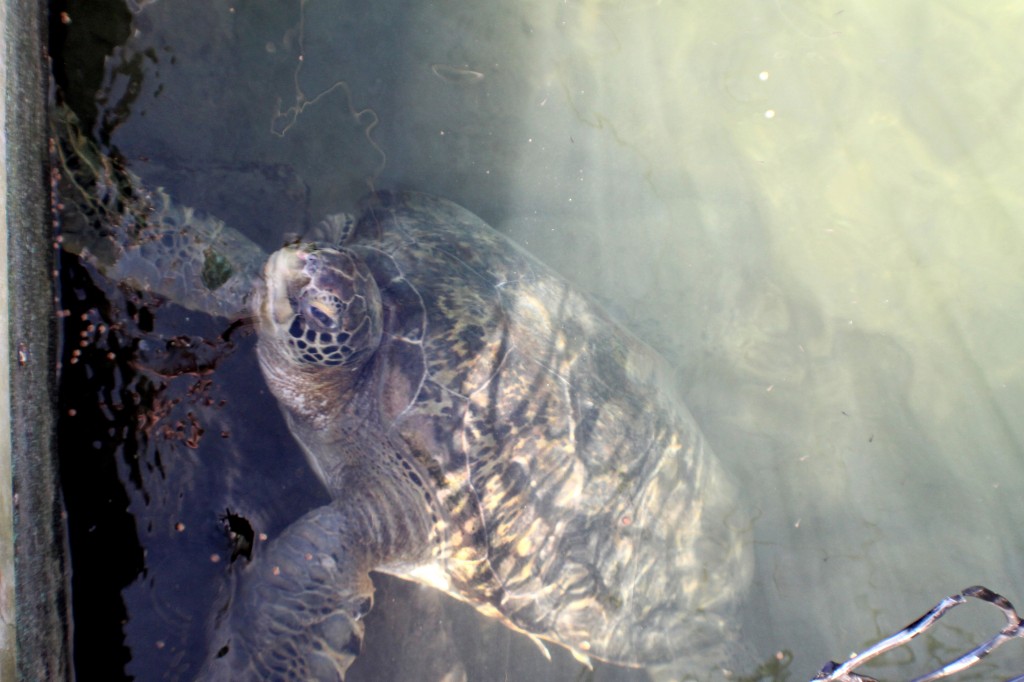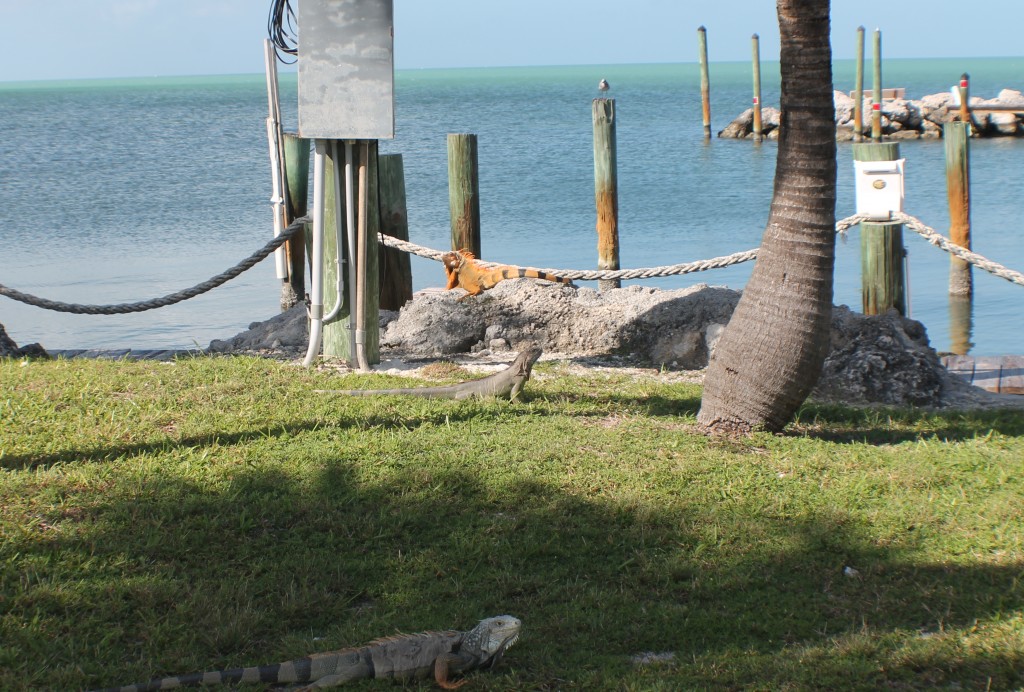In Marathon we visited Honda Bahia Beach and the Turtle Hospital. This post is about the Turtle Hospital, where we took a guided educational tour which includes the hospital facilities and the sea turtle rehabilitation area. This educational experience lasted approximately 90 minutes. At the end of the program we were invited to feed the permanent resident sea turtles. It was easy to find the hospital, since it is located right on Overseas Highway, the main street of the island.
We entered the education center and gift shop where we bought our tour tickets. We had some time before our guided tour started, so we looked around the center, which has a lot of information about the turtles.
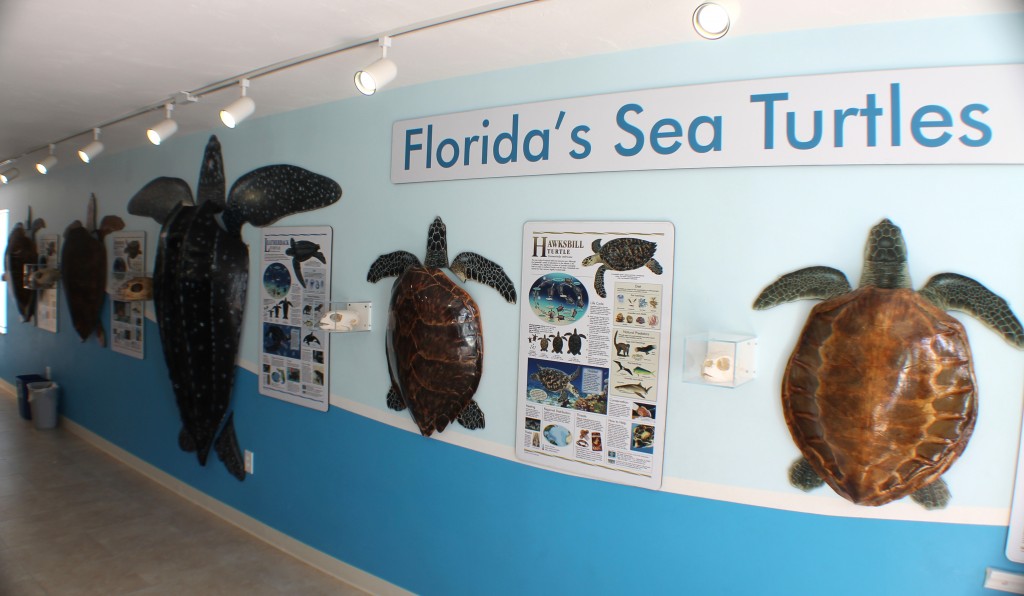
Our educational experiences began in the room pictured below, where an education specialist provided an interactive presentation about sea turtles, the dangers they face, and how we can help.
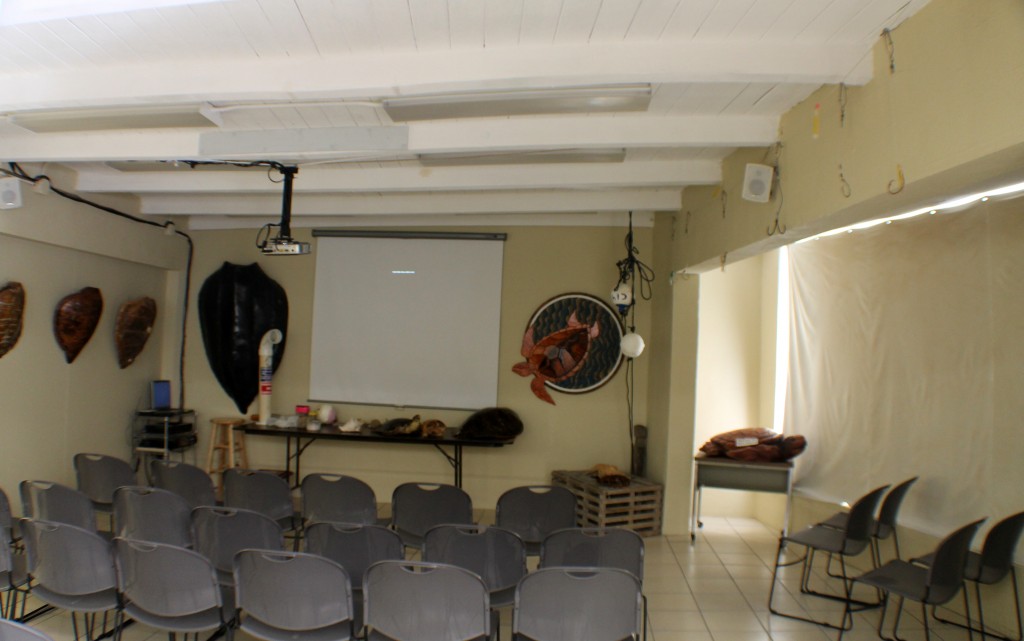
Here are some statistics on rehabilitation enclosures.
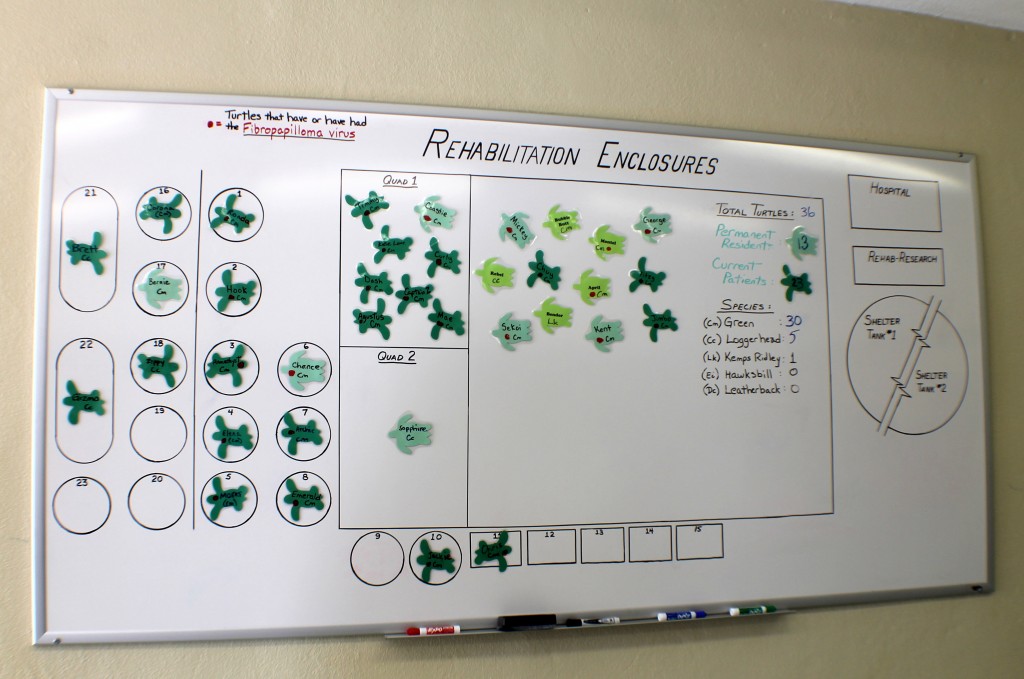
Per our tour guide, when the hospital has a new patient, it is first taken into the Emergency Room (ER) where algae and barnacles are scrubbed off, the turtle is also weighed, photographed, medicated, measured, and given wound care if necessary. X-rays are then taken of the new patient to determine the presence of foreign objects such as marine debris or internal fibropapilloma tumors.
The turtle may then be scheduled for surgery. The operating room contains an anesthesia machine, endoscope, pulse oximeter, electric scalpel and laser. According to turtlehospital.org web site, the most common surgeries are laser removal of fibropapilloma tumors and flipper amputations (usually caused by fishing line and trap rope line entanglement). Many endoscopies are also performed to detect internal fibropapilloma tumors or ingestion of foreign objects.
Then we moved to the Rehabilitation Enclosure which contains 23 individual tanks and the 100,000 gallon salt water pool.
The individual tanks are for sea turtles that require intensive care. Some of them are reserved for hatchlings.
The tidal salt water pool houses sea turtles that are permanently disabled. These turtles permanently float due to boat hits (‘bubble-butt syndrome’), are missing too many flippers, etc., and would have a very poor chance of survival in the wild. A few will remain at the hospital for the remainder of their lives while others will be adopted by zoos or aquariums around the globe.
We had fun feeding the turtles there.
On our way back from the Rehabilitation enclosure we saw several iguanas, which are typical for the Florida Keys.
